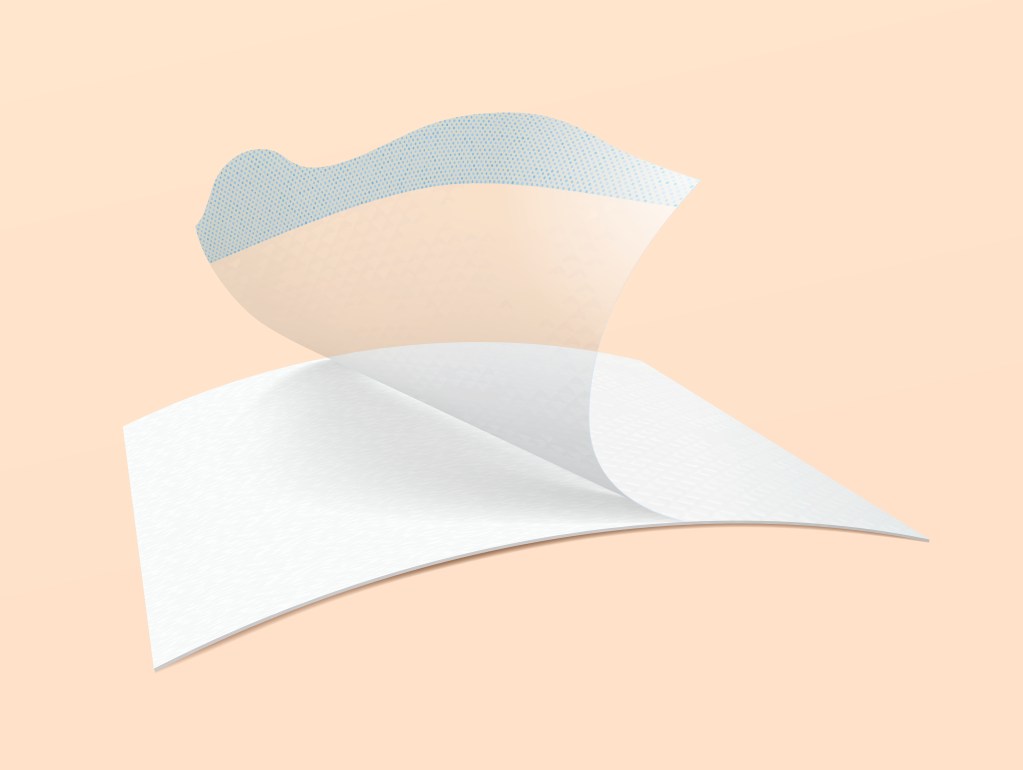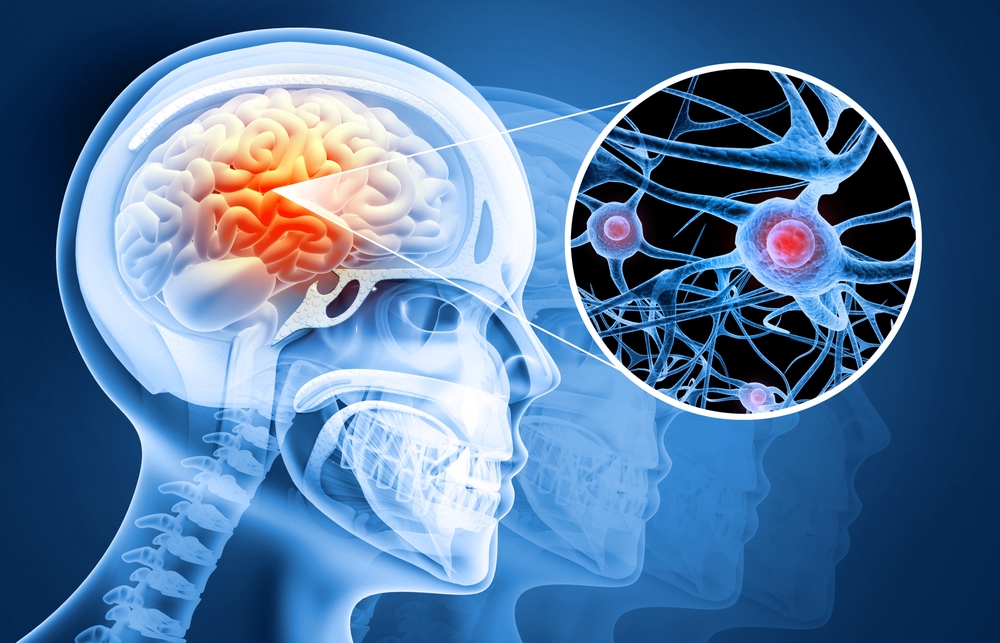What if healing a damaged heart was as simple as placing a sticker on it no scalpels, no stitches, no hospital stay? Just a whisper-thin patch pressed onto an organ’s surface, quietly delivering treatment with surgical precision.
For decades, medicine has relied on cutting, stitching, and flooding the body with drugs to treat internal organs. But those methods come with steep costs: trauma, infections, long recovery times, and powerful medications that often miss their target and harm healthy tissue. The human body, especially dynamic organs like the heart and lungs, wasn’t built for rigid materials or systemic drug bombardment.
Now, a team of researchers in China has developed a new kind of treatment that challenges everything we thought was necessary for healing. A paper-thin, surgery-free bio-patch that can cling to beating organs, adapt to their movement, and deliver drugs or even gene therapies right where they’re needed without ever breaking the skin.
It’s not science fiction. It’s already shrinking tumors, repairing liver damage, and delivering gene-editing tools in animal models. And it could be the first step toward a future where healing doesn’t mean cutting but cooperating with the body’s own intelligence.
Why Healing Internal Organs Is So Difficult
Healing an internal organ isn’t just about delivering the right drug or closing a wound it’s about navigating one of the most complex environments in the human body. Organs like the heart, lungs, and intestines are in constant motion. A heart beats around 100,000 times per day, lungs expand and contract with every breath, and the digestive system is in near-continuous movement. These aren’t passive targets. They twist, stretch, and compress in ways that make surgical repair and drug delivery especially difficult.
Traditional treatments struggle with that reality. Surgery remains the default for many conditions, but cutting into a moving organ is inherently risky. It introduces trauma, bleeding, infection risk, and long recovery periods. Even minimally invasive procedures can damage fragile tissue or fail to fully integrate with the organ’s movement.

Medications aren’t much better. Most are delivered systemically through pills, injections, or IV drips traveling through the bloodstream in the hope that enough of the drug reaches the right place. But that shotgun approach has limits. Drugs get diluted, degraded, or absorbed by other tissues before reaching their target. In cancer treatment, for instance, it’s estimated that less than 1% of chemotherapy drugs actually reach the tumor site, while the rest floods healthy cells and causes side effects.
There’s also a major mismatch between medical materials and real human tissue. Many surgical patches or implants are designed with uniform properties they stretch or bend the same in every direction. But living tissue doesn’t behave that way. The fibers in heart muscle, for example, are aligned to contract more effectively in one direction. This property, called anisotropy, helps organs function efficiently but makes them difficult to interface with. Some tissues also have auxetic behavior, meaning they get wider when stretched—opposite of how most materials behave. That dual complexity means even the most advanced patches often peel off, break down, or put stress on surrounding cells.
What Is the Bio-Patch and How It Works

At first glance, China’s new bio-patch looks like a sliver of clear film—thin, soft, and barely noticeable. But under that minimalist exterior is a major leap in medical technology. Developed by researchers from institutions including Beihang University and Peking University, this patch called NanoFLUID is designed to do what scalpels, sutures, and systemic drugs have long struggled to achieve: heal organs safely, precisely, and without breaking the skin.
The patch works by delivering treatment directly to the surface of an internal organ. Once placed either under the skin or during a minimally guided procedure it adheres securely, even on beating or breathing tissue. There’s no need for stitches or adhesives. The materials are biocompatible and flexible, allowing the patch to conform to the shape and movement of the organ without causing irritation or tearing.
What sets the NanoFLUID patch apart isn’t just its physical design it’s the way it delivers therapy. Inside the patch are microscopic channels and electrodes that form a nanofluidic system. When activated wirelessly, the patch generates ultra-high but safe electric fields. These fields open temporary pores in nearby cell membranes through a process called electroperforation. It’s not painful or damaging—just a precise, controlled method that allows medications or even gene therapies to enter cells directly, bypassing the usual delays and barriers of the bloodstream.
This method is fast over 100 times faster than traditional diffusion, according to preclinical data. It also reduces the need for high drug doses, because very little is wasted or lost along the way. That means fewer side effects and more consistent treatment at the exact site of injury or disease.
Even more impressive is the patch’s ability to stay in sync with the body. Organs like the heart and lungs expand, contract, and twist constantly. Traditional medical materials usually fail under that kind of motion. The bio-patch, however, is designed with anisotropic and auxetic microstructures patterns that mimic the natural behavior of muscle and connective tissue. This allows it to stretch and bend just like the organ it’s attached to, maintaining stable contact and function.
And it’s not limited to just one use. The patch is programmable and modular, meaning it can carry different kinds of therapeutic payloads from anti-cancer drugs to gene-editing tools like CRISPR. It can even be adapted to support tissue regeneration using biologics such as stem cell–derived exosomes.
So far, the patch has shown promise in animal models. It has successfully treated breast tumors by releasing drugs directly into the tumor site. It’s helped reduce inflammation and promote healing in cases of acute liver injury. It’s even been used to deliver genetic material and identify key drivers of cancer metastasis in living tissue.
Why This Patch Is a Game-Changer

This bio-patch doesn’t just improve treatment it redefines how we think about healing. Instead of treating the whole body and hoping enough medicine reaches the target, the patch delivers therapy directly to the problem site, at the cellular level. That shift alone cuts down on drug waste, spares healthy tissue, and reduces side effects. But the impact goes deeper.
1. Precision Without Invasion
Most treatments are either systemic (like pills or IVs) or invasive (like surgery). This patch is neither. It skips the bloodstream entirely and bypasses the scalpel. That means faster treatment, fewer complications, and no recovery time from surgery. The patch can be applied without cutting or stitching, which makes it especially promising for emergency settings, outpatient care, or fragile patients who can’t tolerate surgery.
2. It Moves With the Organ
Unlike rigid implants or standard patches, this device was engineered to match the biomechanics of living tissue. It stretches with a lung, contracts with a heart, and curves with an intestine. That’s possible because it mimics anisotropic and auxetic behavior mechanical features seen in organs but rarely reproduced in medical materials. This allows the patch to stay in place and function effectively even on the most active parts of the body.

3. It Delivers More Than Just Drugs
The bio-patch isn’t limited to pharmaceuticals. It can carry gene therapies, immune modulators, or regenerative biologics like exosomes or stem-cell factors. That makes it far more versatile than traditional drug delivery systems. In cancer care, for example, it could release chemotherapy at the tumor site while sparing the rest of the body. In transplant medicine, it could apply anti-rejection drugs directly to the organ, minimizing the need for lifelong systemic immunosuppression.
4. It’s Also a Diagnostic Tool
In one preclinical study, the patch helped identify a key gene involved in lung-specific cancer metastasis (DUS2) by delivering a gene library to living tissue. That means the patch could do more than treat it could help diagnose disease in real time, providing insights into what’s happening inside the body without the need for biopsies or blood draws.
5. It Supports a New Model of Care
Perhaps the biggest shift this technology enables is a move away from hospital-centric care. Because the patch is minimally invasive and wireless, it opens the door to earlier, safer interventions. Instead of waiting for symptoms to worsen enough to justify surgery, a physician could apply a patch to stabilize or treat an organ before permanent damage occurs. For people in remote areas or low-resource settings, that could be the difference between managing a condition early or missing the treatment window entirely.
Preclinical Results and What’s Next

The bio-patch is still in the preclinical stage, but the results so far are compelling. In a series of animal studies, researchers have tested the patch on conditions that are notoriously hard to treat breast cancer, acute liver injury, and even genetic mutations and the outcomes point to a real leap forward in organ-specific, non-invasive care.
Localized Tumor Treatment Without Systemic Toxicity
In one study, the patch was applied to breast tumors in mice. Traditional chemotherapy floods the body, often damaging healthy tissues and causing intense side effects. But when delivered through the patch, anti-cancer drugs were concentrated at the tumor site. The result: significant tumor shrinkage with minimal systemic exposure. The rest of the body was largely spared, showing how targeted delivery could transform cancer care by reducing both toxicity and drug resistance.
Liver Repair in a Dynamic Environment
Another experiment tested the patch on models of acute liver injury, a condition where inflammation and tissue breakdown happen quickly and are hard to manage. The liver, known for its regenerative potential, is also extremely sensitive to mechanical stress and inflammation. Researchers found that the patch adhered securely to the liver, even as it moved and changed shape. It released anti-inflammatory agents that accelerated tissue repair and reduced inflammation more effectively than conventional therapies.
Gene Therapy and In Vivo Genetic Screening
Perhaps the most forward-looking application came with CRISPR delivery. In preclinical trials, the patch was used to introduce gene-editing materials directly into organ tissue. Not only did this show potential for treating genetic diseases, it also allowed researchers to run genetic screens inside the body. In one case, the patch helped identify DUS2, a gene that drives lung-specific metastasis in breast cancer. That kind of real-time, in-tissue analysis could change how we diagnose and understand disease progression.
Therapeutic Flexibility
These tests highlight the patch’s versatility. Whether it’s acting as a drug depot, a gene delivery platform, or a real-time diagnostic tool, the patch adapts to the therapeutic goal. This flexibility is a major advantage over existing treatments, which are usually built for a single use case.
Clinical trials will need to test not just efficacy, but also durability, immune response, and ease of use. Regulatory approval may take time due to the patch’s hybrid nature as both a medical device and biologic delivery system but the roadmap is now clearer than ever.
Real-World Impact and Future Possibilities

For patients, this patch could be the beginning of a very different kind of medical experience one that doesn’t start with an operating table or end with a long list of side effects. Imagine being treated for a serious condition like heart damage, liver inflammation, or cancer without surgery, without IV drips, and without days in a hospital bed. That’s the direction this technology points toward.
The patch’s most immediate benefit is comfort and safety. No cutting means fewer complications no infections from open wounds, no long healing process, and no need for painkillers after surgery. It could be applied in outpatient clinics, during a diagnostic procedure, or even through minimally invasive tools like an endoscope. This makes treatment more accessible, especially for patients who are elderly, immunocompromised, or too weak for invasive care.
There’s also a real possibility that the patch could help catch disease earlier. Its potential to deliver targeted therapy and track tissue responses in real time makes it a powerful diagnostic tool not just a treatment. If integrated with sensors, future versions might release drugs only when inflammation flares up or when early signs of tissue damage appear. That kind of smart response could help prevent conditions from worsening, buying patients time and avoiding more aggressive interventions.
Another major advantage is reduced reliance on systemic drugs. For chronic conditions that require ongoing medication like autoimmune disorders, transplant care, or cancer maintenance—the patch could deliver smaller, more effective doses directly to the source. That could mean fewer side effects, fewer pills, and better results with less strain on the body.
But accessibility remains a question. The technology behind the patch high-resolution printing, bioelectronic design, and therapeutic customization is still expensive and may require training to apply correctly. It’s not something every clinic can use yet. However, as manufacturing methods improve and clinical adoption grows, costs could come down, and simplified application techniques may emerge.
The Future Is Soft, Smart, and Scar-Free
The bio-patch isn’t just a new tool it’s a preview of where medicine is heading. For over a century, the scalpel has symbolized progress. But as this technology shows, the future may belong to treatments that don’t cut, don’t scar, and don’t sideline the body to save it.
By delivering therapy directly to where it’s needed without incisions, without systemic overload, and without interrupting the organ’s natural movement the patch challenges some of the oldest assumptions in healthcare. It proves that healing doesn’t have to be invasive to be effective. It can be smart, subtle, and seamlessly integrated with the body itself.
This matters not just for cutting-edge hospitals, but for everyday people. A person living in a rural area without access to specialized surgical care could one day receive life-saving treatment via a simple outpatient patch. A patient recovering from a heart attack might avoid major surgery altogether. A parent undergoing cancer treatment could stay stronger through therapy, thanks to targeted drug delivery that spares the rest of the body.
But the broader shift is even more profound. Medicine is moving away from one-size-fits-all protocols and toward precision, personalization, and prevention. The bio-patch fits that future. It doesn’t overpower the body it works with it. It listens to tissue mechanics, adapts to movement, and delivers only what’s needed, exactly where it’s needed.
That’s not science fiction. It’s science catching up with the needs of real people.
The next generation of healing won’t come with a scalpel. It’ll arrive in a patch soft, silent, and smart enough to support the body without ever wounding it.














Leave a Reply